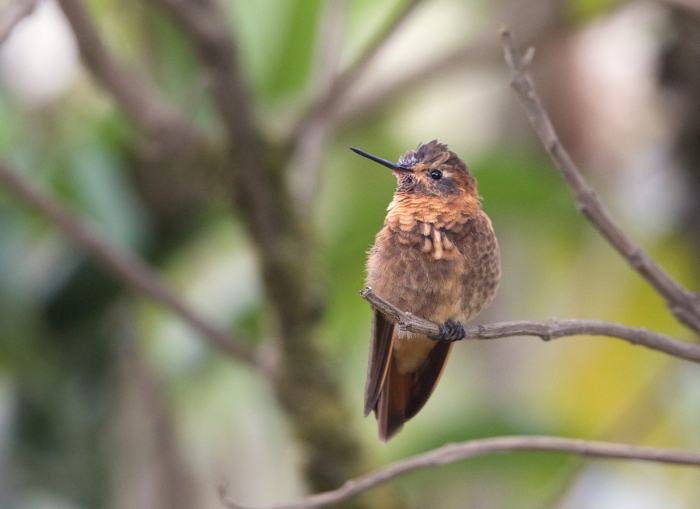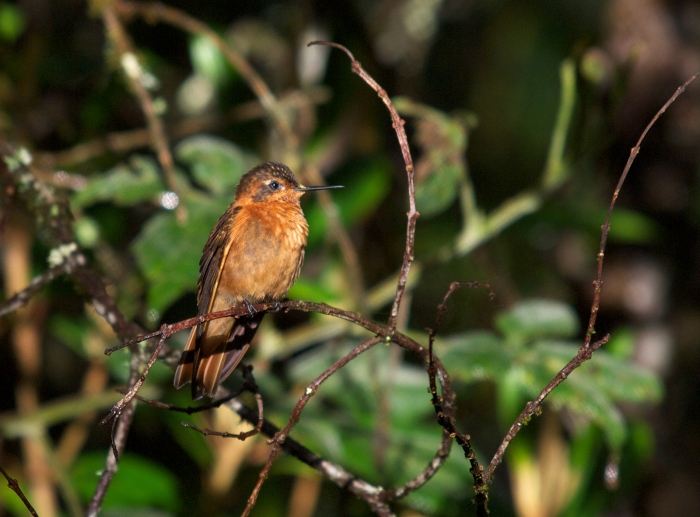Return of Bird of the Week: Shining Sunbeam
Not all hummingbirds are called “hummingbirds.” Some have more poetic, sometimes charming names. Like the Shining Sunbeam.

Shining Sunbeam, Southern Ecuador
This is a large (for a hummingbird, anyway), dark-brown hummingbird with a lilac-gold iridescent lower back and rump. There are several Sunbeam species, and they have in common a proportionally short bill for a hummingbird. This is a high altitude species that inhabits semi-arid montane ridges and cloud forests. Most populations seem to be altitudinal migrants, descending during the tropical winter to lower elevations. WC has seen (but not successfully photographed) in Peru’s Abra Malagra Pass, at an altitude of 14,400 feet. It is mind-boggling that a high metabolism species like this can live and breed in such thin air.
The Shining Sunbeam forages mainly on nectar, but will also eat arthropods. Males aggressively defend feeding their territories from other hummingbirds.

Shining Sunbeam, Menu Road, Peru
There are currently two described subspecies of the Shining Sunbeam. These photos are of Aglaeactis cupripennis cupripennis, the more northerly subspecies. Like so many neotropical species, the Shining Sunbeam is poorly studied and the taxonomy is uncertain.
Neither sex of this species has any white in the plumage, which helps distinguish the Shining Sunbeam from other species in the genus Algaeactis. That’s right; there is more than one species of Sunbeam.
This is a widely distributed species, ranging from Northern Columbia to Southern Peru, along both sides of the crest of the Andes. While Shining Sunbeam is not in immediate danger of extinction, it is a candidate for the escalator to extinction.
For more bird photographs, please visit Frozen Feather Images.